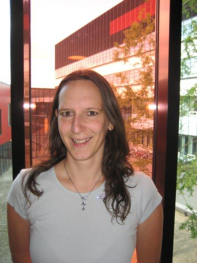Spectroscopic excitation and quenching processes in rare-earth-ion doped Al2O3 and their impact on amplifier and laser performance
Promotion date: 20. September
Promotor: Prof.dr. Markus Pollnau
Assistant promotor: Dr. Kerstin Wörhoff
| This thesis presents in-depth spectroscopic investigations of the optical properties of rare-earth-ion-doped Al2O3 (specifically Al2O3:Er3+ and Al2O3:Yb3+), materials employed for the realization of integrated optical devices such as waveguide amplifiers and lasers. The aim is to provide important spectroscopic parameters for the design and optimization of such devices. Nevertheless, some of the spectroscopic investigations presented here have a fundamental importance as well. The ion-ion process of energy-transfer upconversion (ETU) is investigated in Al2O3:Er3+. Generally this process, in combination with energy migration, can be detrimental for the amplifier or laser performance of a number of rare-earth-ion-doped compounds, by depleting the population of the long-lived upper state of the corresponding luminescence transition, thereby diminishing the available optical gain. The presence of a fast quenching process induced by, e.g., ion pairs and clusters, undesired impurities, or host material defects such as voids, is verified in both Al2O3:Er3+ and Al2O3:Yb3+, and results are compared. A new model that takes the fast quenching into account is presented, which can be helpful in predicting and optimizing the performance of rare-earth-ion-doped devices. Finally, the impact of quenching on Al2O3:Er3+ amplifiers and on Al2O3:Yb3+ distributed-feedback lasers is discussed. |
In your research project, was there an important moment?
When characterizing some basic optical properties of Al2O3:Er3+ we were unpleasantly surprised by some measurement results. A colleague of mine at IOMS and I were trying to determine the value of a certain parameter (the ETU macroscopic coefficient) with two different methods and we obtained very different results. Luckily, after some thinking, we understood this was all due to a fast quenching process in our optical material. Afterwards we designed a theoretical model to incorporate this effect. Also we were able to experimentally verify and characterize its presence. This led to a better understanding of this (usually) unwanted phenomenon and its impact on optical devices such as amplifiers and lasers. We pointed out to other researches in this field that this fast quenching, usually neglected, actually plays a big role in the operation of optical devices and it should be treated carefully.
Where did you publish your findings?
I have two papers published in Optics Express and Applied Physics Letters, but the articles that summarize the core of my thesis have just been submitted to the Journal of Physical Chemistry C and the Journal of the Optical Society of America: B (JOSAB). Also I was a speaker in a number of conferences, but I would like to remember especially the International Conference of Luminescence, which is the most important in my field.
How did you develop personally as a researcher and scientist during your PhD period?
First of all, I work in a much more structured way now. During these years I learned to plan things in advance, from sample preparation and construction of setups to measurements and data analysis.
In producing some devices I collaborated with colleagues in Gent, Belgium, who produced some silicon chips I needed. We also cooperated with colleagues in Hamburg, Germany, who are experts in a type of measurements I needed to perform. So, collaborations are essential for taking your project further.
Also essential was the communication within my own group: with the technicians who helped me in fabricating the samples and constructing the optical setups, with colleagues who helped me with the theoretical part of the research and with my supervisor Markus Pollnau, who guided me with his expertise in rare-earth-ions.
What are your future plans?
I am looking for a job preferably at a high-tech company in Europe. I value academic research because of its freedom, but personally I think that sometimes too much freedom can lead to a lack of focus and clear goals. In a company environment I expect that more defined targets will be set.
Here in Twente we work in integrated optics, i.e. light-on-a-chip. This market is specialized and not much extended yet. But I hope I can keep on working in optics, which I find fascinating. I think there are good chances here in Europe. Perhaps not so much in Italy as it is not very common yet for PhD’s to participate in company research. Also the job market for young people in Italy is not very good at the moment due to the economic crisis.
What, in your opinion, is important for Mesa+ to stay successful in future?
The technicians are very important to make sophisticated experiments possible, in my case to prepare the samples and help me use the optical lab functionalities to the full. Unfortunately I had some bad luck with the clean room as some equipment I needed, broke down just before the move in 2010 and it took a long time before it was repaired. My project was heavily affected by that. But at the end everything worked out fine as I was able to come up with some nice, more fundamental, scientific results.
Mesa+ is a great institution. Perhaps it should reach out more to the general public and better spread the results of its research. But I guess this might be a more general problem, including the University of Twente as a whole.

